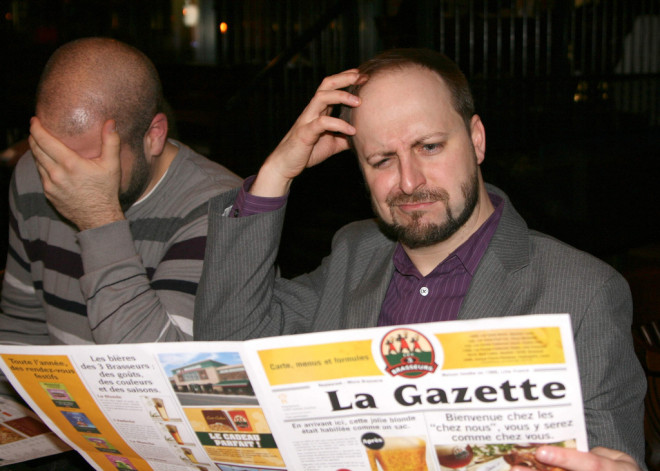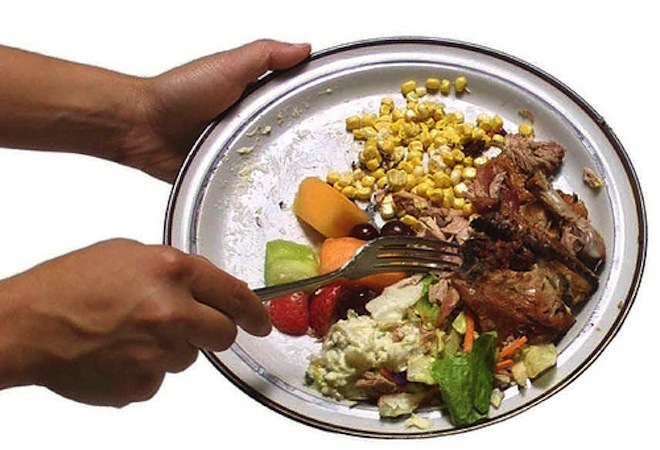5 Psychological Reasons People Won’t Eat at Your Restaurant

Your confusing menu may leave customers unsure and unwilling to buy.
Let’s imagine your restaurant isn’t doing so well. Hopefully that’s not true, but a little role-play can always bring new insight. Especially when it comes to psychology!
So what the cause of your restaurant’s hypothetical slump? Let’s look at 5 ways to lose customers’ interest…
1. An overcomplicated menu
This article in The Guardian found that menus with too many options are psychologically off-putting. Research found that people think they want more choice, but really they just want a simple list of good options. (tweet this)
Avoid a menu that confuses customers with overwhelming choices, complex layout, or cryptic language. Choose a smaller selection of items, and feature the dishes you’re best at making.
The same goes for your menu online!
2. A buzzkill atmosphere
It really is a science how stimulating the five senses can influence the buying process.
One of my favorite places to eat is an Ethiopian restaurant around the corner from my office. The music, lighting, and smell of roasting coffee transports you to the streets of Addis Ababa. It’s warm, inviting, and adventurous.
Music is a great way to start setting the mood. Research from the University of South Wales showed that subjects spent more in restaurants with upbeat music. Depressing songs led to less spending, but the worst results happened when there was no music at all. This means you should pay close attention to the music your restaurant offers.
Put together a custom themed playlist of music with a positive tone! Ditch the radio, and definitely cut out the sad love songs.
Once the audio is covered, take a look around your dining area. Think about whether it makes you feel at home, comfortable, and inspired. Take note of how your restaurant smells, sounds, and feels from the customer’s perspective. You may even recruit some friends for a second opinion.
Remember – atmosphere also translates through your website. Your site should draw customers in, just like your physical location.
3. Inconsistent quality

People like consistency. If your food tastes different with each visit people will stop coming.
People like knowing what to expect when picking a place to eat out. If they order food that’s phenomenal one day, then mediocre the next, they’ll probably stop ordering from you altogether.
Set your restaurant’s standard goal, and develop a system to reach that goal consistently. Train your kitchen staff and servers using a clear and consistent framework. Partner with suppliers you can trust to deliver good ingredients every time. Make sure that in busy times, you have enough staff and support to deliver the same level of quality.
Inconsistency can also happen within the space of your restaurant. If there’s a big difference between your best and worst tables, not knowing what you’ll get can be a turnoff. Remember this as your set up your dining area.
4. Lacking social media following
When it comes to online networking, restaurants are competing in a popularity contest. Social media is a powerful communicator of whether your restaurant is “hot” or not.
If your Facebook and Twitter are sparsely populated with real users, your customers will make a mental note. They’ll wonder why no one’s paying attention to you online. (tweet this)
Conversely, if you boast a hefty following, you’re appealing to customers’ psychological reasoning. They think, “if so many people like this place online, it’s probably a really good restaurant!”
Use the online community to prove how many people have tried your restaurant and loved it. Add social media buttons to your website, and post consistent content to your networks. Always respond when people reach out to you on social media. Build your following!
5. Poor customer relationships
A few weeks ago I posted 24 tips from successful restaurateurs (see Part I & Part II here). One of my favorite came from Danny Meyer of Union Square Cafe. He observed that restaurant patrons pay for much more than food – they also pay to feel uplifted, inspired, and connected to other people.
Every aspect of your restaurant needs to focus on building a personal connection with the customer. Managers and servers should make a point of engaging in conversation. Invite feedback, and be present. Don’t let your customers walk away feeling isolated from your brand.
The main takeaways; Review your menu, optimize your atmosphere, deliver consistency, grow your social network and build better customer relationships.
You are now better equipped to appeal to your customers’ deepest desires!
Photos by Graham Lavender and Outside Perception

I second the point on the overly long menu. I don’t think many people even look at all the pages in the menu. And uncomfortable seating can have a customer heading out just as quickly as bad food…
Good article guys.
I especially agree with #4 as a huge psychological reason for not trying a new restaurant. Social proof is so important that I would even suggest adding a sixth item to your list:
Negative Reviews on Yelp
A harvard business study in 2011 found that a one star decrease in Yelp rating led to a decrease in revenues between 5-9 percent. Think about how many customers make up 5-9% of your restaurant’s business.
When judging a new restaurant, checking out reviews on Yelp is one of the first things many customers do. I would say that it is a huge psychological reason that potential customers wouldn’t try a restaurant.
I would add this takeaway for restaurants: respond publicly to your negative reviews on Yelp! Showing that you care goes a long way to reverse the psychological impact of negative reviews about your restaurant.